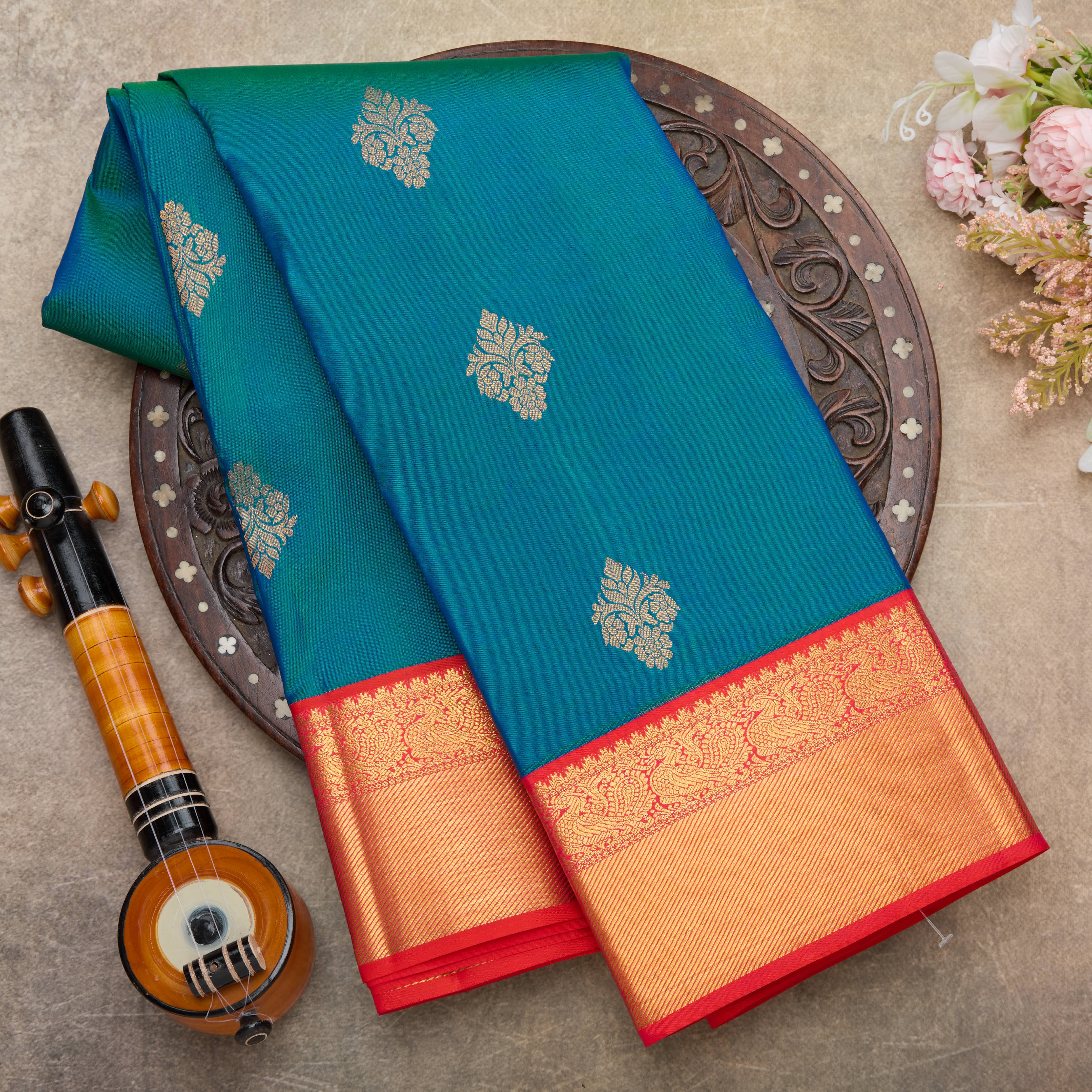The History and Significance of South Indian Kanjivaram Sarees

Table of Contents
Kanjivaram sarees, also known as Kanchipuram sarees, are a traditional form of saree that originated in the town of Kanchipuram, located in the state of Tamil Nadu in South India. These sarees are known for their intricate designs, rich textures and vibrant colors, and are considered one of the finest and most luxurious forms of silk sarees in India. In this blog, we’ll explore the history and significance of South Indian Kanjivaram sarees.
Tissues From The Fibers Of A Lotus Flower
According to legend, Sage Markanda was a master weaver who was favored by the gods and blessed with the ability to weave the most exquisite and luxurious silk sarees.
As the story goes, when Sage Markanda was wandering through the forests of Kanchipuram, he saw the goddess Parvati weaving a silk saree. He was struck by the beauty and intricacy of her weaving and asked her to teach him the art of silk weaving.
Parvati agreed to teach Sage Markanda the art of silk weaving, and he spent many years learning from her. With her guidance, he became a master weaver, and his silk sarees were highly sought after by royalty and nobility throughout South India.
Legend has it that Sage Markanda wove a silk saree for the god Vishnu, which was made of pure gold and silk. This saree was so exquisite that it was believed to be able to withstand the test of time, and it became a symbol of wealth and prosperity in South India.
History of Kanjivaram Sarees
The history of pure Kanjivaram silk sarees dates back to the reign of the Pallava dynasty in the 7th century. The Pallava dynasty was known for its patronage of arts and crafts, and it is believed that the weaving of silk began in Kanchipuram during this period. Over time, the art of silk weaving became a significant part of the local economy, and the town of Kanchipuram became renowned for its exquisite South Indian Kanjivaram sarees.
The weaving of Kanjivaram sarees is a highly skilled and intricate process that has been passed down through generations of weavers. Traditionally, the silk used to weave these sarees is obtained from the mulberry silkworm, which is found abundantly in South India. The process of obtaining silk from the cocoons of the silkworm is a labor-intensive process that involves boiling the cocoons and then unwinding the silk thread.
Once the silk thread is obtained, it is then dyed using natural colors derived from plants, flowers and other natural sources. The dyed silk threads are then woven on a loom using a technique called 'pit loom' that involves the use of pedals and pulleys to create intricate patterns and designs.
Also read: How to Store Silk Sarees
Significance of Kanjivaram Sarees
Kanjivaram sarees are considered a symbol of traditional South Indian culture and are an integral part of weddings, religious ceremonies and other auspicious occasions. These sarees are known for their durability and longevity, and many families pass down their Kanjivaram sarees as heirlooms from one generation to the next. Whether it’s a classic gold-threaded weave or a beautifully vibrant pink colour silk saree, Kanjivarams hold a timeless appeal, making them a treasured possession for many.
The intricate designs and motifs on Kanjivaram sarees are often inspired by mythology, nature and the local culture. The sarees are typically adorned with intricate borders, intricate patterns and motifs, and contrasting pallus that add to their overall beauty and elegance.
Kanjivaram sarees are also known for their versatility and can be worn in a variety of styles, ranging from traditional to modern. Bridal Kanjivaram silk sarees are a very famous attire all over the world and brides, irrespective of custom, wish to adorn a Kanjivaram on their special day. South Indian parents dream of handing over their sarees and jewelry, as an act of tradition, to the next generation.
Also read: Why Deepam Silks Should Be Your Go-To For Kanjivaram South Indian Bridal Sarees.







